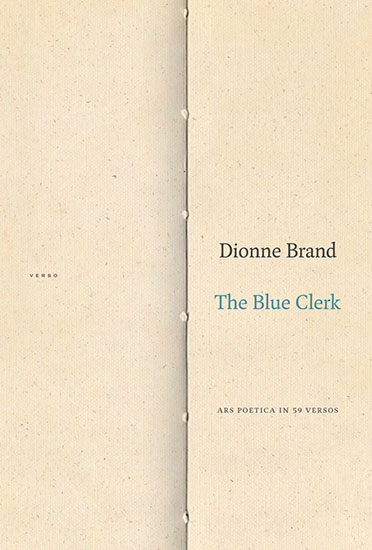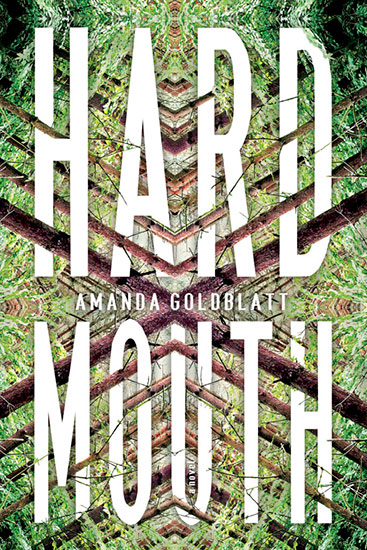Terror-pleasures of alienation from the self/selves: the more ephemeral the feeling the more upsetting, the more gratifying. I simply cannot resist the pull.
Since having a child eight years ago, I have been actively contemplating the impossibility of a coherent self—not that the thoughts weren’t already brewing (much more than eight years ago, I understood exactly what my mentally ill family member meant when he said that he was disgusted by seeing my stepfather behave differently (aka professionally) at work as a patient transporter in a hospital; it seemed so appalling that there were two of him!) and because I remember with such intense diarrhea-level discomfort being interrupted while playing—suddenly observed, privacy and intimacy with a self suddenly exposed—I’ve always, somehow, managed multiple selves with a level-headed caution.
I just can’t ever, ever believe that there is a clear and singular knowable self.
This is a terror-pleasure ever present, many times over, in the dollhouse-ghost-story-dream that is childrearing.
I remember the first time I watched Scenes from a Marriage and how I terror-pleasured while watching a woman (a non-central character, one of Marianne’s clients), sitting blankly at her appointment to discuss legal proceedings for her divorce. She explains that when she examines her life, despite many years of caregiving and the tender acts of domestic time and mutually beneficial bourgeois activities, she feels absolutely nothing for her husband, her children: at least—no love. She admits to feeling that her physical sense of touch is starting to fail; after having lived so many years as a false self (her “mental picture of [her]self . . . doesn’t correspond to reality”), things have lost their sensation, “everything is puny, gray” (via subtitler/translator Stephanie Friedman).
The performance of the confession is a melted wax mask. The mask is simply a momentary distance. The distance itself melts, and a self walks off, while others remain.
And the trouble of all these loose selves running around doing who-the-hell-knows-what. The problem of trying to locate an old one, for another go. The shame and disgust one might feel when trying to up and make one, from scratch. The terror-pleasure compulsion.
Dionne Brand, in The Blue Clerk: “The I who I was before that day went another way.”
Amanda Goldblatt, in Hard Mouth: “If only, all the rest of my life, I could rediscover this lake, over and over, and within this ritual discover an endless, deepening knowing.”
Maria Negroni via translator Michelle Gil-Montero, in The Annunciation, “She copied [paintings] in a fury, ravenously, as if by not having to invent her own forms, she could directly enter the unseen.”
As usual, as I write, I’m not sure what I want to say or have to say or even what I might be capable of articulating. This summer, though, my readings seem to have mostly fallen around the inquiry suggested above: something about self and selves/a possible divergent self, the potential for a single but multi-modal voice, time, constellation (by which I mean pattern-making, my usual and sloppy default mode: to fervently rely on what Sophie Collins calls “the mind’s ductility”). I rely, also, on a kind of medium-at-a-séance effect—something’ll eventually bubble up to expression.
And I have been reading about Cecilia Vicuña’s textile work and how her work is in conversation with arpilleras (hand-sewn images depicting community, torture, and oppression under Pinochet and which were smuggled out of Chile to both raise money and offer testimony). In her deeply engaging examination of textiles and politics, Fray, Julia Bryan-Wilson says that “the form of the arpillera seems determined to speak a double-language.” Bryan-Wilson’s chapter on Vicuña and arpilleras offers all sorts of interesting reports and arguments, and through my luxurious and summer-lazy thinking on it, I became interested in knots and haptic memory (see, too: quipus), and all of this came to be bound with my other reading and with the summertime friendship bracelets my daughter and I have been weaving and knotting and twisting. Double languages.
Could the selves be understood through the strangely dizzying effect of a single color coming up to properly knot-loop around the full and multi-colored bundle of embroidery threads?
Could haptic memory act as a portal to an old self?
I remember lying once on our couch in our living room, with a fever, looking at the winter tree out the front window, a second-story view: the many weird gaps and overlaps of branches—thinking, in my fever, that if I could trace one opening of many crossed branches I could visually enter a portal. Of some sort. Leave fever self behind.
Of the three books I want to weave together here, the first I read was Hard Mouth, and though it was engrossing and wonderful and is written by a beloved friend, I didn’t think to think that it was telling me about selves until I read The Blue Clerk.
Then, in the time- and thinking-knot of them, I got looped.
And, also, they offered some sort of conceptual haptic echo of one another. I was touching my way around a familiarity.
Hard Mouth is a novel, but it seems to me, ultimately, to be a terror-pleasure study in affect and in control over a multi-modal voice. Like you really could friendship bracelet the bundle of loose selves and get them to talk a double language. Let me say first: Denny’s dad is dying, Denny’s experiencing a cold need to leave town and end the self that family-izes and cares, Denny winds up in the deep woods and performs a self that is all body. Denny narrates her life alongside an imaginary friend (an old timey Hollywood type named Gene), and here (in these eavesdroppy drips of chat between them) Goldblatt suggests (merely suggests, never instructs on) something about a self turning the gaze and the feel in on another self and the potential for corralling the selves into a voice that can “discover an endless, deepening knowing.” At the very start of the book, Denny tells a childhood story: she carelessly and regretlessly broke her mother’s heirloom bracelet. As a way to parent her and to instruct her on the empathy required to understand how doing so hurt her mother, her father takes Denny to another girl’s bedroom in a no-one’s-home house (he’s a realtor, so this is a logical jump in space). He tells her to pretend to be another person, this other girl, to practice what it is to look out of and feel the world through someone else’s self. It’s hauntingly weird. But soft, never sinister. She plays along. She swaps out. She ends one self and enters another. She goes home. She “washe[s herself] in a stranger’s soap” and “put[s her] face under the strange water.” “Here’s your robe,” her mother says, “as if telling the truth.”
In The Blue Clerk, Dionne Brand writes about the writing-self. It’s a kind of pulled back curtain on the thinking that goes into composing. It’s a set of left and right hand pages. It’s “versos.” It’s conversation between a kind of record-keeper (“the blue clerk”) and “the author.” It’s eavesdroppy, but not in the chatty drip of Goldblatt’s Denny and Gene; it’s a kind of seepage, maybe because it’s out of time. (A reviewer linked its “skewed, nonlinear spectrum of time” and its “entire gamut of time itself as ‘timeless’” to its queerness.) There is lots of heavy ephemera in it: reading it can feel sharp and dreamy all at once. The author can’t forgive some of her favorite authors for their cuttingly stupid moments of racism. The author wonders if any country was ever for women. The author defends communism as the only option. The author transcribes details of a childhood. The author wonders about the relationship between a self and scarcity and a kind of joy. The end of human time. “Sometimes I am overloaded, too many people, too many thoughts, the author says.” The author observes people at the mall:
There are people, she says, who have cut off whole parts of themselves to acquire the elusive perfection that this city needs. There are people who have become quite ugly in finding that perfection. There is no delicate centre to them, just the coarse exterior of getting and wanting. Maybe they save the delicate interior for when they’re home alone but in public all that’s on display is that violent wanting.
And then, “This is how the author would put it. I hate malls. They fill me with revulsion and hatred for everything.”
Sometimes I feel as if all of my various hatreds and the attendant rage could burn off a set of shimmery polite selves and reveal a core person who might act only on those impulses. Sometimes I feel as if it’s just those impulses resting on top of something else, as if the gregarious me is actually real.
Cecilia Vicuña was exiled in London during Pinochet. Julia Bryan-Wilson argues that Vicuña’s work acts out a wondrous matrix of: exiled Chilean/”marked as brown” in England/conceptual artist/craft-based artist/textile artist/poet:
Vicuña . . . experiment[s] with various interfaces between the human body, space, gender, and fiber, writing in a poem that accompanies a performance, “When a girl is born, her mother puts a spider in her hand/ to teach her to weave” . . . she [is] conceptually weaving in space . . . the weaving of gazes.
This “weaving of gazes” is Bryan-Wilson’s explanation of Vicuña’s “The Glove” (1966, 1994), a performance that “masses together red and orange yarn that tether two hands to the railing of a city bus.” And then what follows is a description of the piece “Chalequito” (“Sweater of Holes,” 1969):
[The sweater is] a little vest that she wears over a dark shirt when posing for a photograph . . . Composed using a crochet stitch so open that the vest is more holes than fiber, and clasped together across the breastbone, the vest paid homage to the importance of negative space in Andean cosmologies. Vicuña saw affinities between the vectored webbing of constellations and the mesh of crochet.
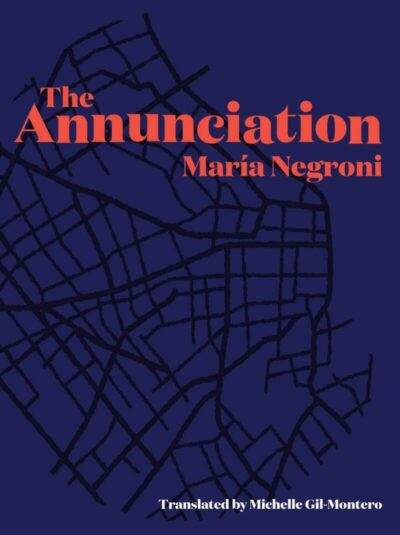 In Maria Negroni’s/Michelle Gil-Montero’s The Annunciation, a former revolutionary from Argentina is exiled in Rome. The speaker has impossible conversations with “delicate centres” of the self: Longing, [her] Private Life, old friends and romantic partners, The Word House, Portable Memory, Nobody . . . her whole experience of time is a thinking on it. “Do I even need to add that art is its own reality, and that the true measure of truth is depth, not accuracy? A work lays images over places that lack reason.”
In Maria Negroni’s/Michelle Gil-Montero’s The Annunciation, a former revolutionary from Argentina is exiled in Rome. The speaker has impossible conversations with “delicate centres” of the self: Longing, [her] Private Life, old friends and romantic partners, The Word House, Portable Memory, Nobody . . . her whole experience of time is a thinking on it. “Do I even need to add that art is its own reality, and that the true measure of truth is depth, not accuracy? A work lays images over places that lack reason.”
All the vibrations here: selves in nightmarish rounds of sounds, a depth, a “deepening knowing” without “accuracy,” a “vectored webbing of constellations” “over places that lack reason.”
I have been working on another piece of writing about liminality, ephemerality, and a list of works that somehow comment on/tinker with/luxuriate in time. Of course I don’t know how/where it’s going. But somehow I, too, seek to “directly enter the unseen” of my selves’ forms. I want an intellectual space/a genre/a sort of formless form for, say, the entire body of work by Marie Redonnet/Jordan Stump and the sound and look of my gaudy yellow rose curtains hitting the wind and the quickly passing disassociation one might experience at a certain intersection in a certain mood in certain weather. I want a genre that can hold a certain timbre of voice and a certain way of getting chills while being caressed. I want some kind of genre of time. Or: I’ve often wondered if I am doing self all weird, if my being in a body is a little off, if I lack empathy or if I suffer from an excess of it, if I’m conceiving of time in a selfish way, if I’m really with my daughter while we lie around and talk, if I’m there at the front of the classroom, if I’m there in a dreaded conversation with a neighbor, if I’m there when I obey authority, if all the selves are just really, really sick. Or is that just biding one’s time.
Negroni’s/Gil-Montero’s book is, like Goldblatt’s, a kind of novel—but, again, for me this one is a study (of what? the self as a symptom of time, maybe? have I stolen that from Joanna Newsom?)—but definitely a consideration of revolution, art, loss, power (which might as well be considerations of self, anyway): “The world and its music boxes.” The narrator
[has] a plan . . . to write a still life and put [herself] into it. If [she] look[s] hard enough, [she]’ll find a shadow. Shadows will be there . . . everything could end tomorrow . . . everything will, in fact, end tomorrow, and then [she] won’t need to wear [her] grief like an amulet . . .
As I am thinking on this book in my forced constellation with the other two, I see now more plainly the issue of exile. All of the selves have left something/some place (Goldblatt’s Denny runs to the woods to be all body, Brand’s “the author” has left behind childhood geography and its selves, Negroni’s/Gil-Montero’s narrator has left a life in the revolution to live a life in herself—and of course, though I mean it to act as an overlay on “the places that lack reason,” Bryan-Wilson’s chapter on Vicuña is explicitly concerned with such). I don’t know. Bodies in space and time chasing after or chasing away. Acting in both directions.
Bryan-Wilson says that the women who worked on arpilleras worked both communally and individually, worked both under the constraints dictated by the Vicaría (a Catholic human rights group that helped to smuggle out the arpilleras for fundraising) and against them, worked as skilled seamstresses and as untrained laborers, worked to produce goods and also to witness the disappeared (they often used scraps of fabric from their missing loved ones’ clothing), worked on cozy floral landscapes and deeply upsetting scenes of torture (one arpillera pictured in Fray has a flap to be lifted up to reveal a woman being tortured with electrodes to her vagina), worked in a double language.
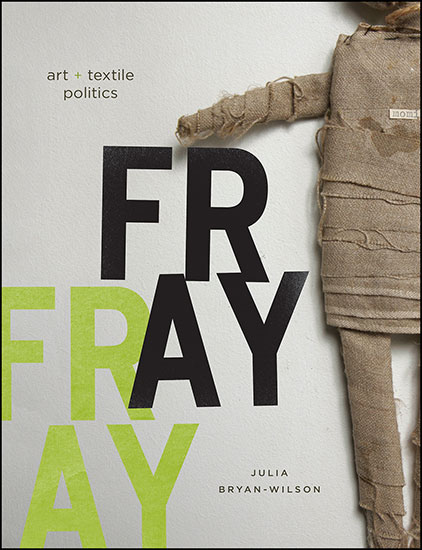 Brand: “One could not easily separate oneself from the ‘we’ constructed and being constructed by the spectacle and its narrations or reiterations.”
Brand: “One could not easily separate oneself from the ‘we’ constructed and being constructed by the spectacle and its narrations or reiterations.”
Negroni/Gil-Montero: “Once I ran away like a mourning heroine. I was wearing a little wool hat and high-heeled boots.”
Goldblatt: “I’m not deluded. Gene was me and not me: the right tool for the job.”
I see a flurry of selves floating loose as coins; I also partake in the wondering over a divergent self—one who breaks off (maybe especially in an as yet unknown to be momentous moment) and does something distinct, contrary to, the other self/selves. This is, I do know, a rather unsophisticated concern. I don’t want to be overly easy in my thinking. But isn’t it, after all, true that sometimes one melts off and heads out to something else. That’s something, there.
In the early pages of The Blue Clerk, Brand tells a small story of being nine years old and walking home from school. Brand starts and re-starts; the narrative is hard because it’s memory. The narrative is hard because it’s about a peeled-off self.
When I was nine coming home one day from school, I stood at the top of my street and looked down its gentle incline . . . When I was nine and coming home from school one day, I stood at the top of my street and knew, and felt, and sensed looking down the gentle incline with the small houses and their hibiscus fences, their rosebush fences, their ixora fences, their yellow and pink and blue paint washes . . . in my brown overall uniform with the white blouse, I stood on the top of my street knowing, coming to know in that instant when the sun was in its four o’clock phase and looking down I could see open windows and doors and front curtains flying out . . . I stood at the top of the street for no reason except to make the descent of the gentle incline towards my house where I lived with everyone and everything in the world . . . it came over me that I was not going to live here all my life, that I was going away and never returning some day . . . a wave of time passed over my heart drying it and I didn’t descend the gentle incline . . . the I who I was before that day went another way, she disappeared and became the I who continued on to become who I am. I do not know what became of her, where she went . . . When I was nine, I left myself and entered myself.
When Denny is getting inside the other girl’s self, she “consider[s] that there might be people who [she doesn’t] know currently who would one day be very dear to [her].”
Negroni/Gil-Montero: “I am walking the edge of the abyss.”
Brand’s “the author” describes being put into an unwanted dress as a child: “I thought of the dress as a beheading.”
In all of these books: so much potential for dizzy time-travel alienation self/ selves sadness exhilaration. To walk “the edge of the abyss.” To get into the too quick to even record sensations that Denny has while she’s in the woods; she’s just there, some hyper-distilled self, maybe. When Marianne (back to Scenes from a Marriage) is hearing her client describe her empty sense of self, she says, “That sounds frightening.”
A scholar on a panel at a conference this summer seemed to argue that being scared is a naïve encounter with a text, rather than a potentially liminal-ephemeral-self-peeling one . . .
I like to engage with a text in a state of wax mask fear. I like to overlay texts on my selves.
From Anne Yoder’s interview with Goldblatt: “I have, I feel, a whole capability of communication that I don’t generally use because of the kind of person I am socially. It’s fun to use that language in a character.”
Consider this: in explaining Negroni/Gil-Montero to someone else, I said that in the book there was something about walking past gravestones and seeing one’s own legs in all the mirrors of them. When I tried to find it again, to transcribe it here, I could not. I looked and looked. I don’t know if I just lost it or if I invented it, or if there is a kind of wacky portal to it by way of merged selves, “a whole capability of communication” that I just can’t access, as this self. Nothing in my haptic movement could locate it.
From Bryan-Wilson’s discussion of Vicuña, again:
A Quipu That Remembers Nothing consisted of her act of thinking about a quipu—the knotted cord method of communication used by Andean peoples beginning around 3000 BCE . . . there are no material remains . . . of Vicuña’s imagined quipu, aside from her recounting her thought to others and writing about it as a little note after the fact. This “mental thread” stretched from her mouth to this page like an oral history, told first to herself and then retold by others, reknotted as it is rearticulated over time . . . it raises questions . . . about the disappearing archive that resides in . . . shifting memories.
From Negroni/Gil-Montero: “reality isn’t my forte,” “I’m obsessed with patching together unlikely things,” “I prefer fugitive gestures that lead us into depths of ourselves and resist interpretation,” and “Sometimes I rush out to the street like I’m trying to run away from myself.”
I perhaps overly rely on things “composed using a crochet stitch so open that” there are “more holes than fiber.” I’m always hoping that my preference for impression over thingness will allow me to walk the abyss.
What happened to the cursive in my signature during all these years? It’s nothing at all like it was before. How many befores were there, anyway?
Today I had to carry some stuff into my office at work. I have a small foot injury, so I am slow and unsteady, and I am must travel through the building in an unmemorized way (take the elevator, for example). I have worked at this university, mostly in this particular building, for ten years. I have been pregnant here and have had fevers here, migraines, post-insomnia days, sadnesses. I have had nursing pads pop out of my bra here. I have pumped my breasts here. I have had many periods. I have had dirty hair. I have had fancy outfits for special occasions. I have had secret wrongs committed against me and felt by me like a teenager. Today, though, moving through the building, in this never-before-lived way, shook me a bit. I don’t believe in anything supernatural but I do worship the aesthetics of the supernatural, the occult, the ineffable: I felt like I was being ushered along by some other selves, clinging like legs reflected in those gravestone mirrors.
Toward the very end of Hard Mouth, Denny is back in her parents’ home.
Ma was at the table looking at the newspaper, some lighter section. Home, or Style. Weekend. The pages shushed like skin running across skin. I found I perceived many things like this, now: of the body (gross, intimate, decaying) or not of the body (null set).
She has a momentary illusion of seeing her mother’s hair “greasy in the sunlight, clumped at the crown, supported by a buttress of flaked scalp,” but then she blinks and sees that the “tresses [are] clean and arranged, and shining as a brass doorknocker.”
This moment unsettles me, in my favorite ways.
I re-watched The Double Life of Véronique as research for this essay. I’d remembered it as being about “more holes than fiber,” a text that can lay “images over places that lack reason.” It is a film about a double, certainly, but it’s also about haptic memory (especially in musical expression) and self—and maybe even moments of reverie that could be understood as works in my time genre. (Both Weronika and Véronique, who are selves to one another, like to bend their gazes through curved glass, looking and looking.) Véronique says (via translator John Gudelj), “All my life I’ve felt like I was here and somewhere else at the same time.”
In The Annunciation, the narrator worries over Cotard’s syndrome in which “the patient denies the existence of [her] own body.” The novel is so packed with delightful bits of lyricism that whatever event is transpiring or being narrated upon is completely consumed by the hoarded treasure of interior speechmaking, which is hallways and hallways: the narrator becomes “the kind of girl with no past and no dreams (like film noir dolls).” “But what body am I talking about?”
Brand: “We [the author and the blue clerk] negate each other.”
Negroni/Gil-Montero: “We embraced duplicity.”
Apparently, there are two different versions of The Double Life of Véronique. Krzysztof Kieslowksi made a slightly distinct one for the American market. “At one stage, [they’d even] had the idea of making as many versions of Véronique as there were cinemas in which the film was to be shown.” The idea was for each and every “copy” of the film to have its own subtle but distinct characteristics; essentially, each film would be “handmade.” There would be some with longer endings, different endings, longer scenes, different shots, etc. They had enough material to do this. But not the time nor the money, of course. I wonder how magically weird the world could be if people might, instead of resisting a lack of homogeneity, embrace it as a “deepening knowing.” Kieslowksi writes, “I had a weak and vague story line . . . a story about a certain sensibility, a certain sensitivity.” (This could go in my time-genre; I mean: that “certain sensitivity”!) A producer’s early idea for the film’s title: The Lonely Together. (I’m getting all this from my university library’s copy of the Criterion disc, which includes an excerpt of Krzysztof Kieslowksi’s memoir, by the way.)
In my ceaseless and sloppy pattern-making, I desire a portal to the lonely together, I guess.
I like iterations and reiterations, and empty time, and a bent gaze, and a mistaken gaze at a loved one’s hair in the kitchen in the morning, and to blink and see it clear, just to undercut that relief with more terror-pleasure.
Also, of course, sometimes, I want desperately to be done with some old self that’s malingering. And oh even that old nagging sensation can seat me in the terror-pleasure chair, where I am most at ease.
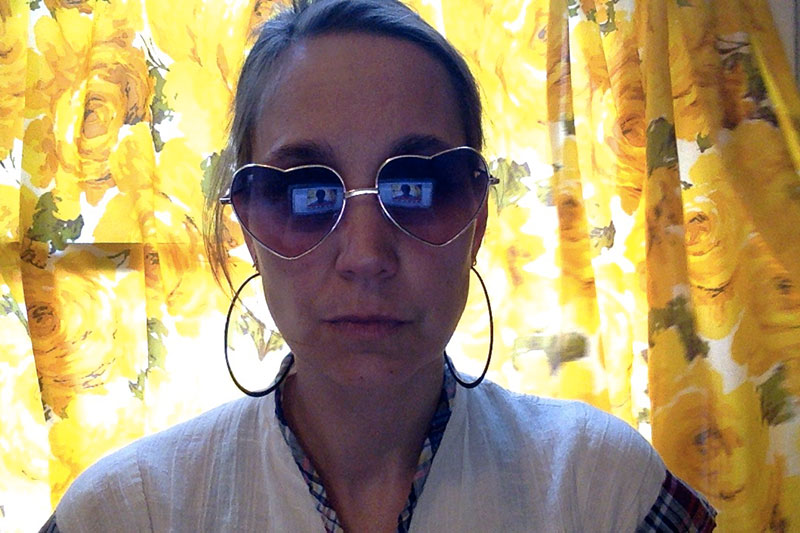
About the Author
Olivia Cronk is co-winner of the Tarpaulin Sky Book Awards for her manuscript Womonster, which will be published in 2020. She is the author of Louise and Louise and Louise (The Lettered Streets Press, 2016) and Skin Horse (Action Books, 2012). With Philip Sorenson, she edits The Journal Petra.
